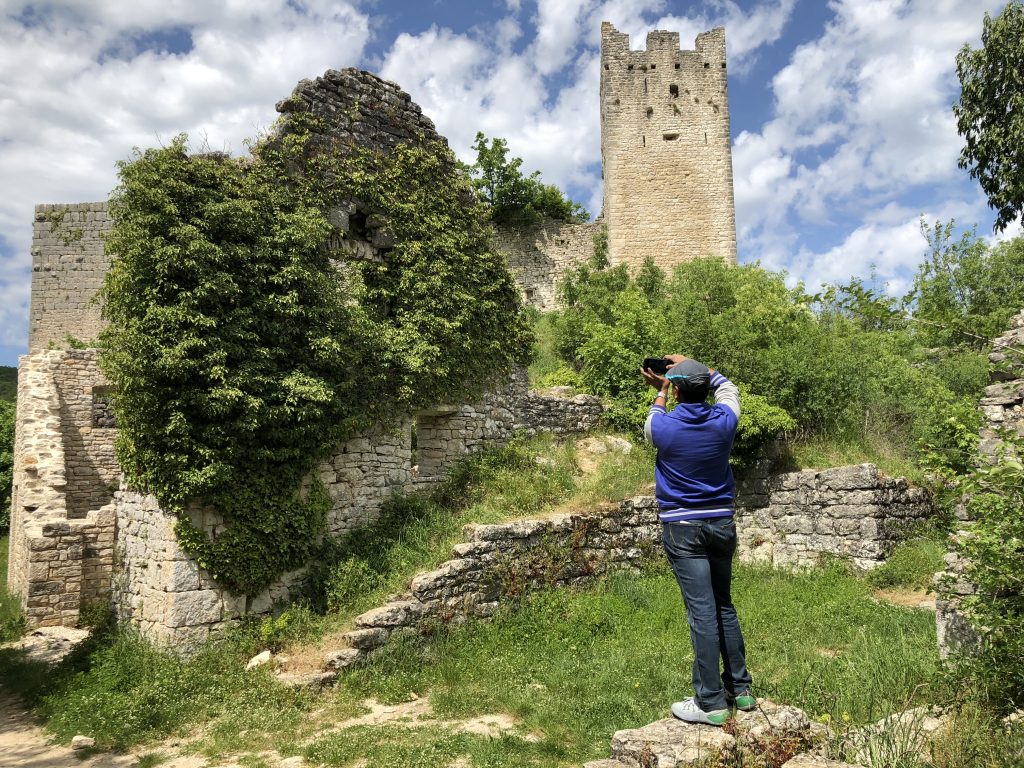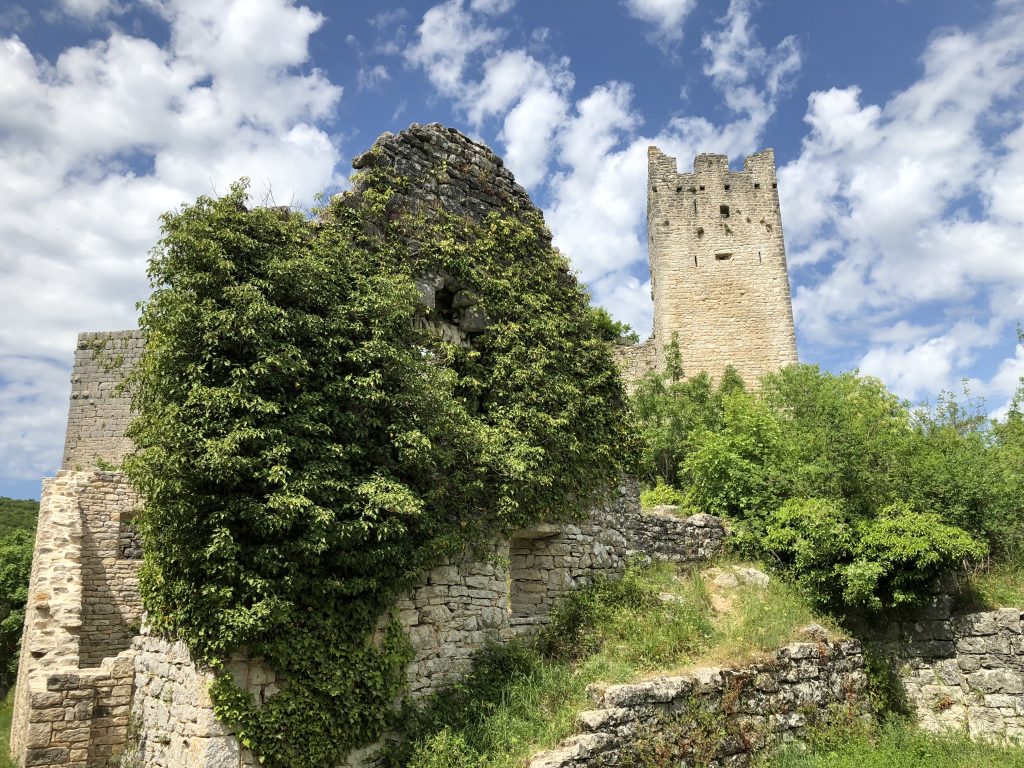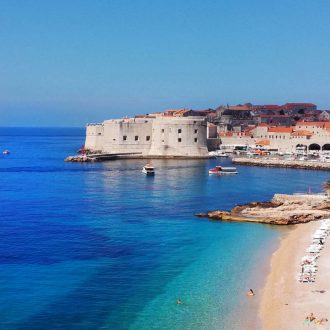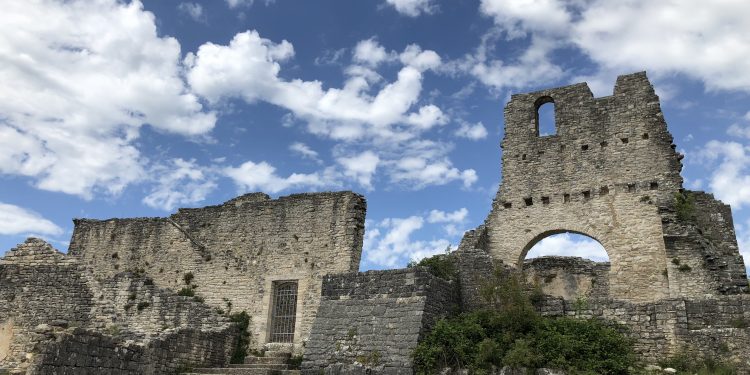
Detours, especially during road trips are special as they can suddenly transform your travel experiences. The landscape changes in a moment along with the atmosphere. Sometimes it’s a charming fairy tale world that greets you out of the blue, at other times it’s an eerie but exciting ghost town that makes you want to stop dead in your tracks. We were on a road trip through Istria in Croatia and we stumbled upon Kanfanar near Rovinj. And standing tall and blocking our path was the ruined fortress of Dvigrad castle. I am always fascinated by ruins and I instantly decided to explore the crumbling relics of a medieval Istrian town – Dvigrad Istra that has been abandoned for the last 400 years.
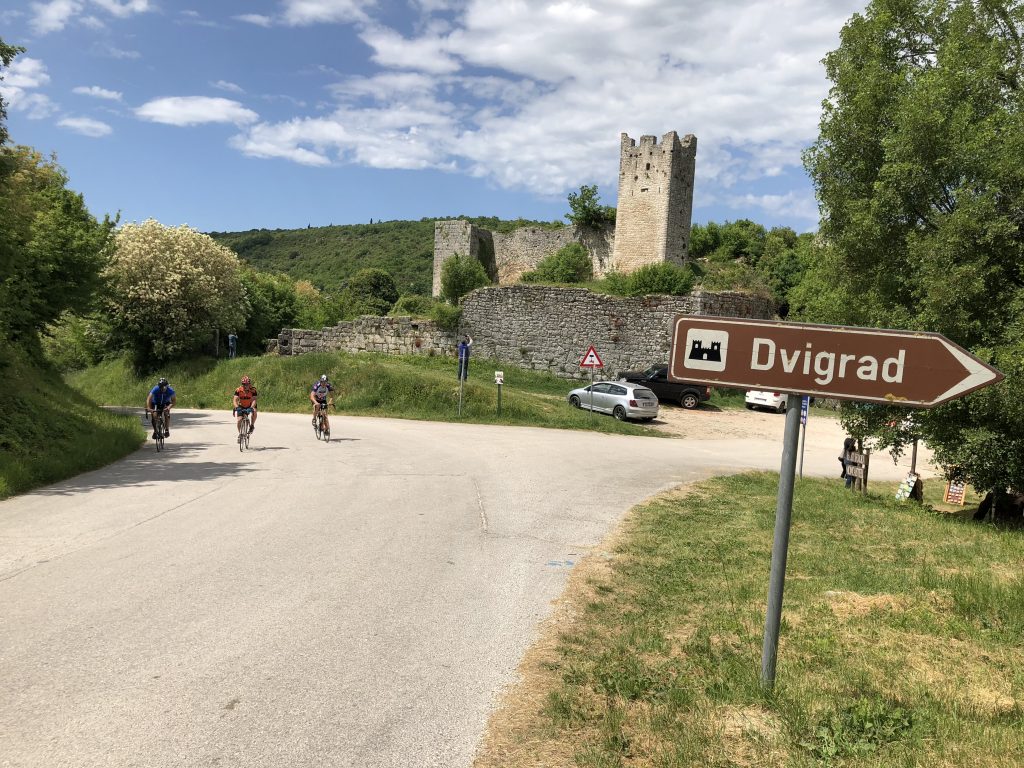
The two castles and towns of Dvigrad
Dvigrad originally translated to two towns or two castles – Moncastello and Castel Parentino. What was standing in front of me was the remains of Moncastello. It is believed that Castel Palentino was abandoned in the 10th century itself. All I could see was just a plateau where it once stood. Standing at the foot of the ruins, I saw the towering remains of Moncastello as a medieval town castle looked down at me. The Church of St Sophia was perched even further, at the highest point of Dvigrad Istra, as the town was called, dominating the entire crumbling landscape.

The Dvigrad castle was surrounded by two rings of walls and there were three gates and towers scattered among the ruins. The main town square of Dvigrad Istra surrounded the Dvigrad castle and one could see areas occupied by residents and craftsmen as well. The gates opened into the main town and it is believed that over 200 buildings were once housed here, along with military quarters. Everything was just broken and crumbling ruins, remnants of a town that once flourished in this region.
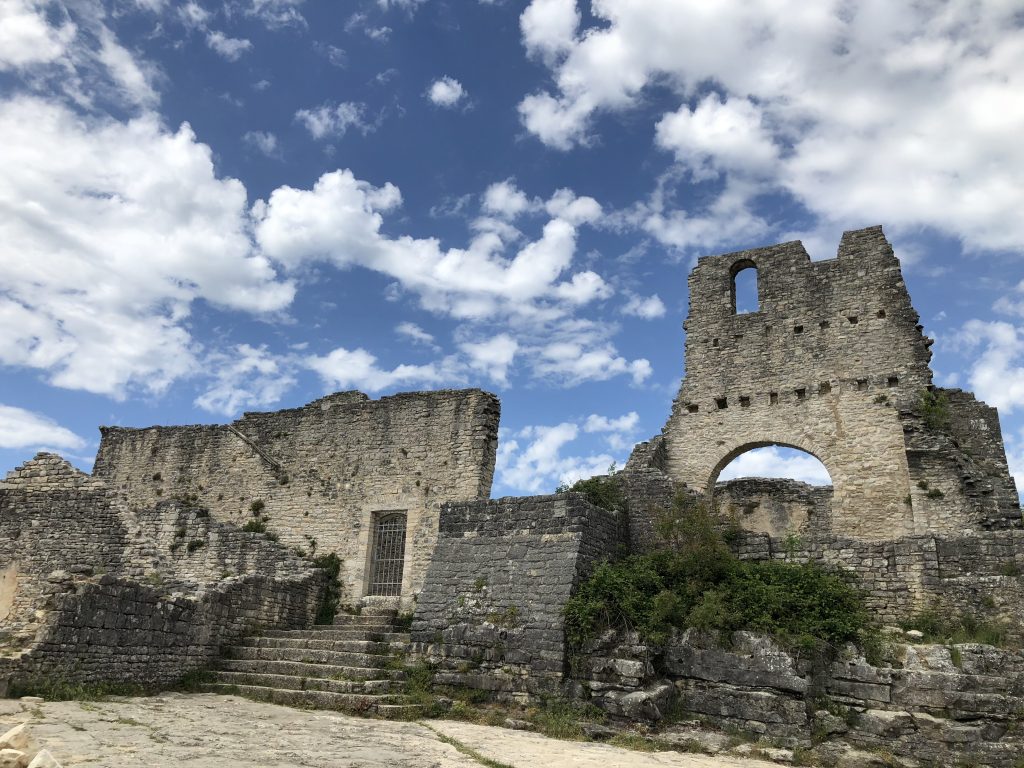
History of Dvigrad Istra
Dvigrad’s history started with the pre-historic era, but later the Romans and the Slavic tribes made it their home. Historically however it was mentioned in the 9th century. Constant plundering and battles denuded the town while plague and malaria killed the rest of the people. When the war between Genoa and Venice was fought in Istria, it is possible that the Parentin Castle was destroyed. However, the name Dvigrad Istra remained. In the 14th century, the Venetians invaded the town. Wars continued to plague the town, but it was eventually the plague that ravaged the town.
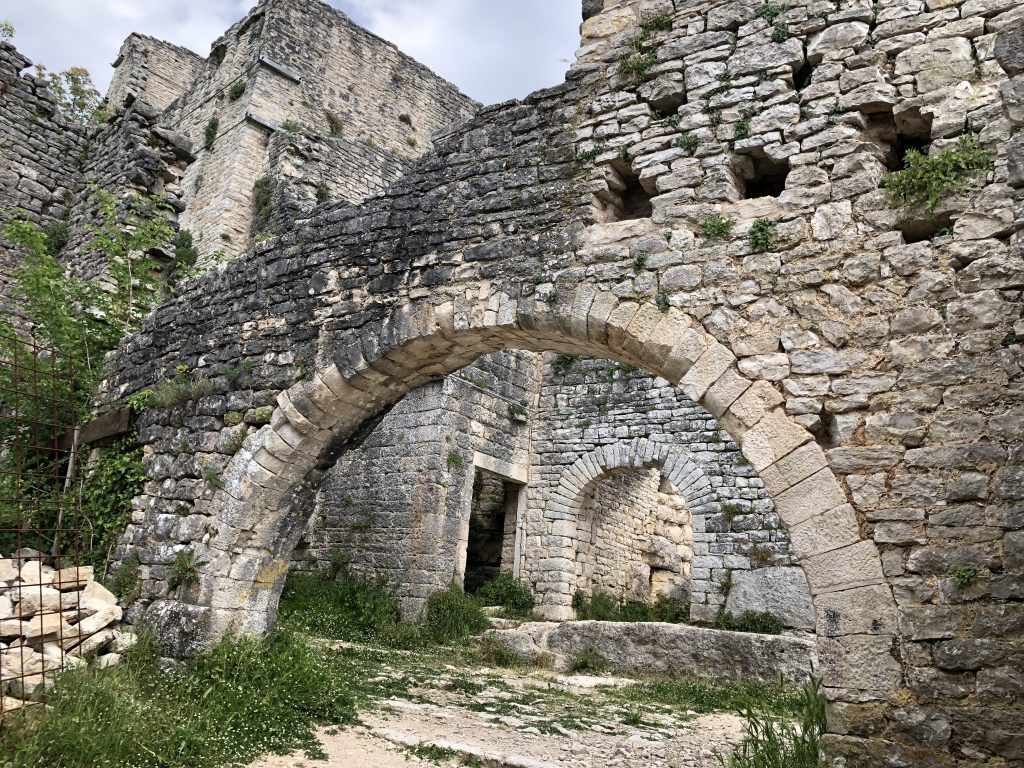
Even as the continuous strife between Venice and Austria led to people abandoning the town and moving to nearby villages like Kafanar, death, and disease wiped out the town, Malaria followed plague and at one time, in the 17th century only three families remained. Finally, even the St Sofia Church located at the highest point of the Dvigrad castle was abandoned and the Dvigrad parish was shifted to Kanfanar. The town eventually was abandoned completely and as time took its toll, only skeletal remains of the erstwhile castle and church remained.
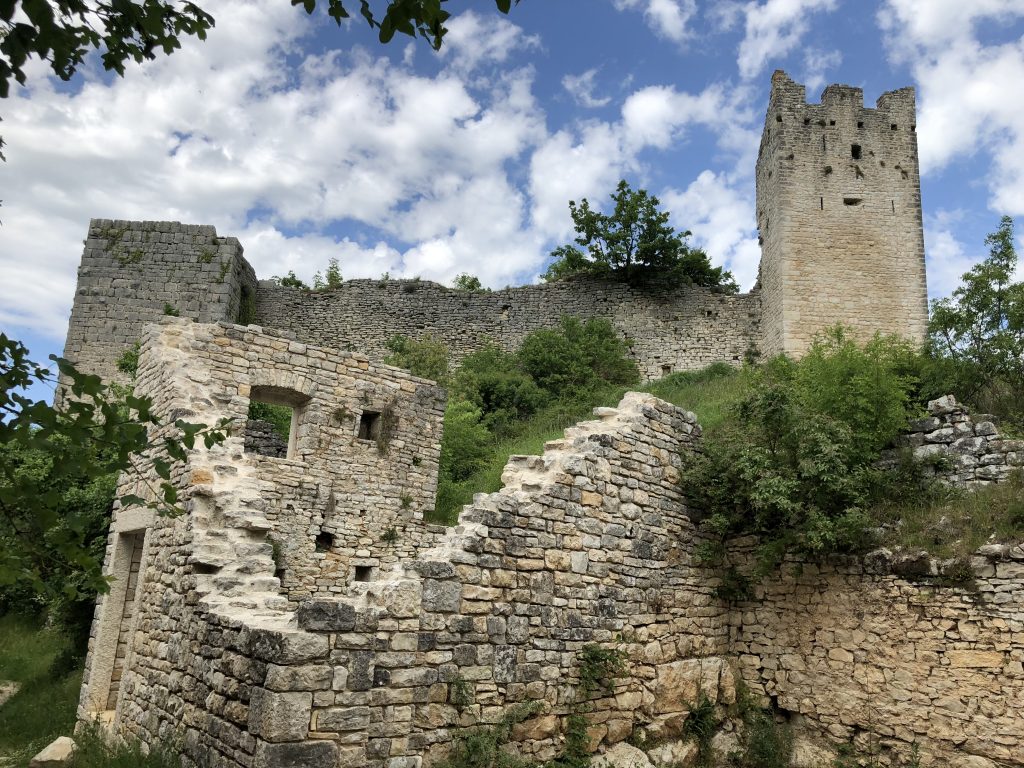
The Church of St. Sophia in Dvigrad
Standing at the highest point of the town, the church was apparently built in different phases. In its earliest form, it just had a single nave with an inscribed axis and was built around the 5th century. Eventually, it was partitioned into a three-nave structure and had semi-circular apses with frescos painted around them. Around the 9th century, a chapel, baptistry along with a bell tower was built and a sacristy was added later. The current church dates back to medieval times and is more rectangular in shape and is decorated with frescos.


A six-sided or a hexagonal-shaped pulpit had been moved to the Church of St. Sylvester in Kanfanar, along with numerous other stone fragments and frescoes as parts of the museum collection. One of the reliefs adorning the pulpit is that of St Sofia holding a town in each hand. It’s a symbol of Dvigrad and a motif on Kanfanar’s coat of arms.
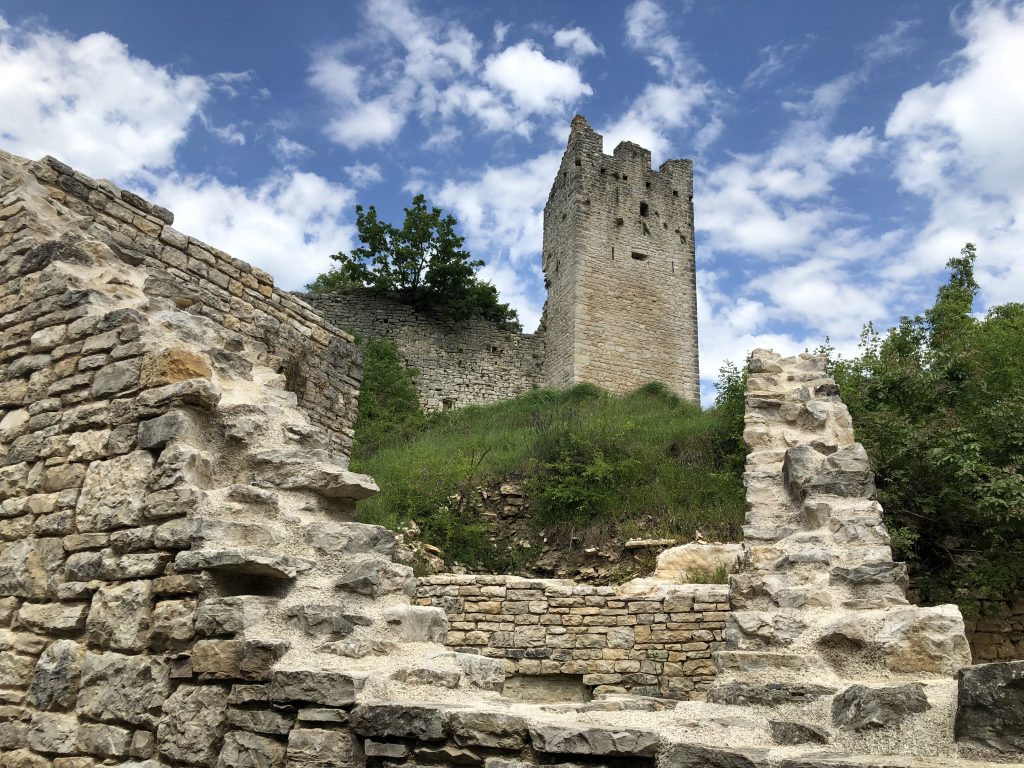
Legend of St Sofia
When Dvigrad was abandoned, the parish also decided to shift to Kanfanar and move the holy altar sacrament and consecrated hosts. However when they came to the Church of St Sofia, they realized that they could not find the monstrance with the Holy Body. Eventually they found it lying near the wilderness. When the priest tried to take it, he could not touch it, until he wore his chasuble.
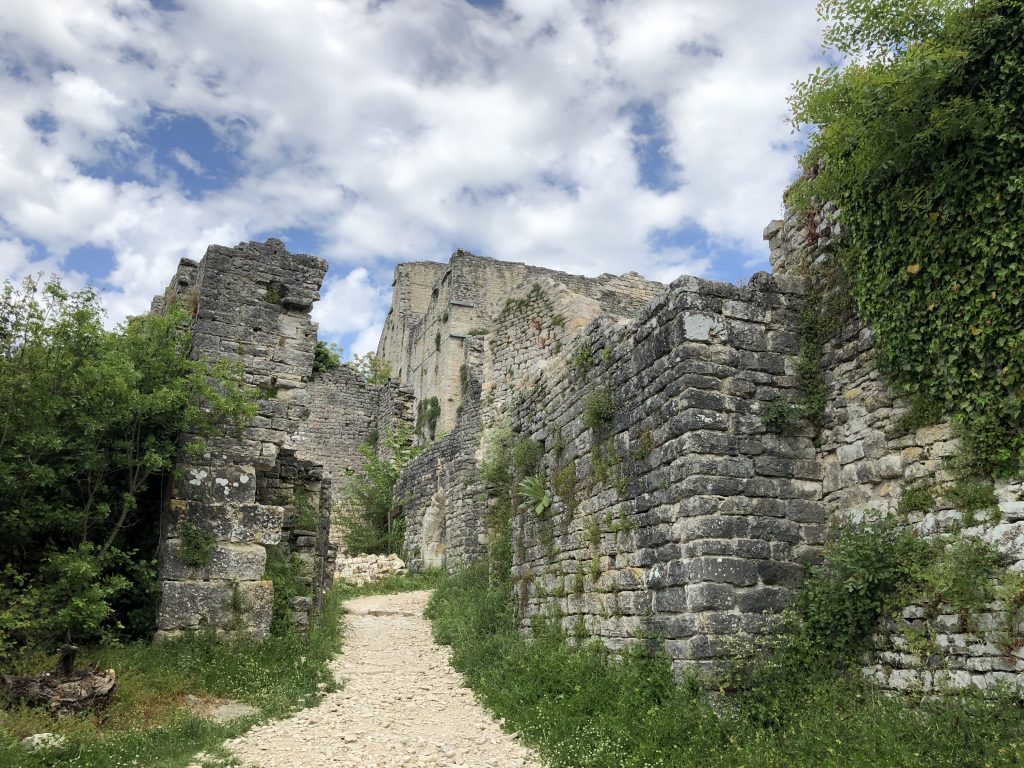
The Church of St Mary of Lakuc
Another church known for its Glagolitic inscriptions and colourful frescos is the Church of St. Mary of Lakuć located below Dvigrad. Painted in hues of purple, orange, red and green tones by The Colourful Master, (so named for his colourful art) some of the frescos here have been preserved. One of the well known frescos is that of the Mother of God, where the protector is watching over her parishioners . There are several others of apostles and saints, symbols and signs from the cosmos and stories from the Bible including Birth of Jesus Christ.
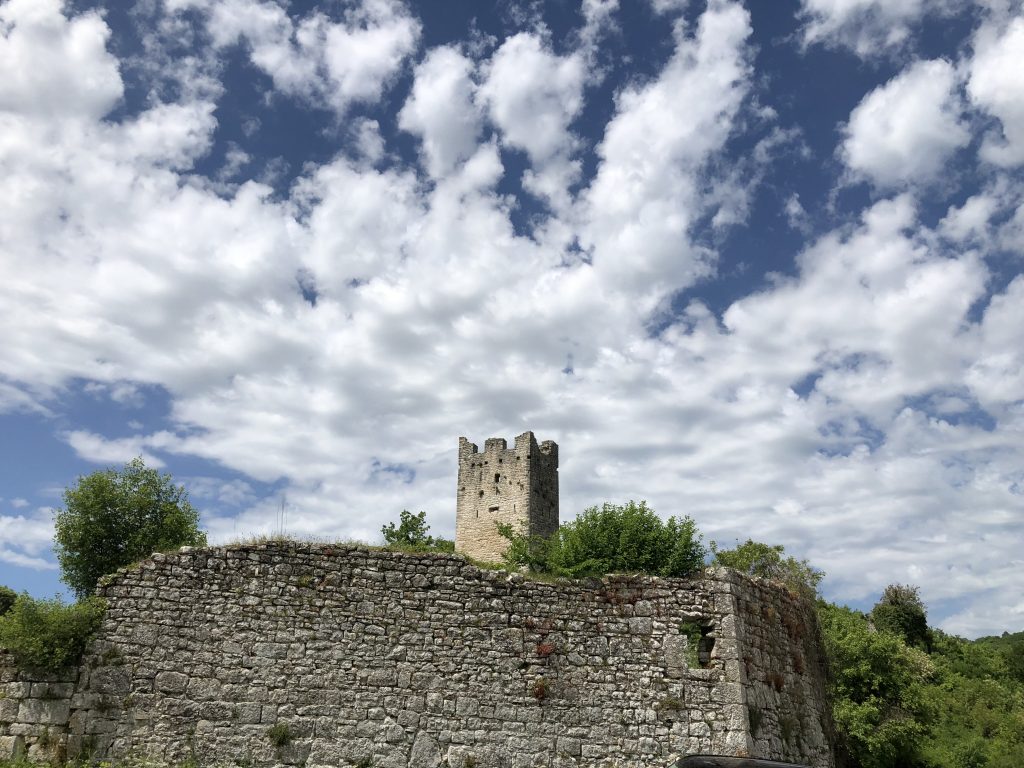
Kanfanar
We did not linger too long in Kanfanar but just managed to drive a little but around the town. Kanfanar, once a settlement of tribes was ruled by Dvigrad until the residents abandoned the town and moved to the villages. Kanfanar eventually became the new town. Eventually the land of shepherds and herdmen as it was called became a town sought after by merchants and artisans and the parish was built here by the 17th century. With a railway line built between Pula and Rovinj, two main cities in Istria, Kanfanar became an important junction as well and a municipality as we can see it today. However it is Dvigrad and its ruins that still looms over Kanfanar as the tragic story echoes across the broken walls.

The Legend of Henry Morgan’s treasure
No story is complete without a bit of a treasure hunt. Henry Morgan, a notorious pirate and the former Lt General of Jamaica known for looting in Panama was chased by the British fleet across the Adriatic Fleet and towards the Limska Draga Fjord, where Dvigrad is located. According to the legend, Morgan eluded the British and hid in Dvigrad which was abandoned by then. He eventually settled in a village nearby which is now called M(o)rgani. The treasure is still hidden somewhere amidst the ruins of Dvigrad. Perhaps it may be found someday!
